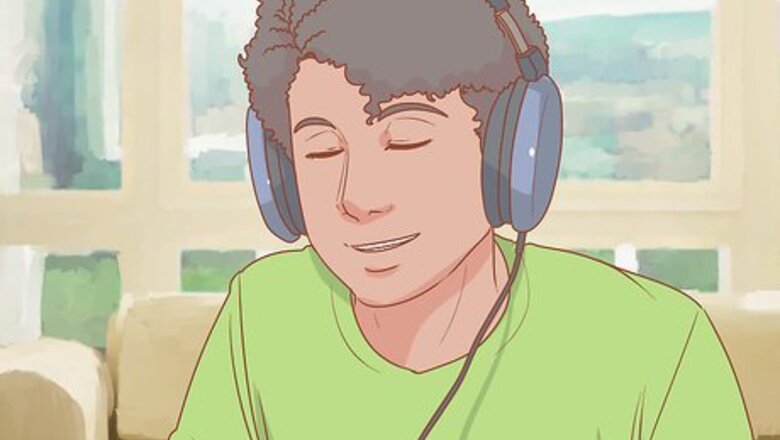
views
X
Expert Source
Dariusz Horvath-KrolProfessional Ballroom Dancer & Dance Instructor
Expert Interview. 13 September 2021.
Most importantly, you have to have fun!
Finding the Beat

Listen to the melody of the song to find the energy of your freestyle. The melody of a song is the catchy layer of the song. But it doesn’t necessarily have to be the singing. It can be a sequence of notes that are incorporated into the song. Finding the melody will help you find the energy of the song, which will help you choose moves that are fast, slow, jerky, fluid, or whatever matches that energy. For example, you wouldn’t do high energy dance moves to a slow country or a grooving hip-hop song.
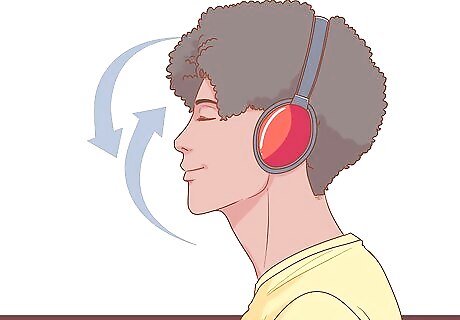
Bob your head to the rhythm of the beat. Warm-up and start moving your body by nodding your head to the beat. This will help you begin to blend your movements with the music. Start with slow bobbing motions, and once you get comfortable and feel like you know the rhythm well, pick up your movement energy. When you find the beat and start bobbing your head, your confidence will rise because you’ve managed to capture the energy of the song.
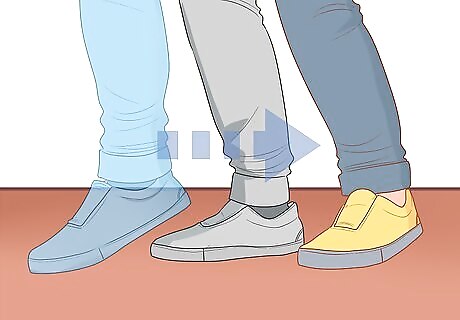
Start to shift your weight back and forth on your feet to the beat. Now that you’ve gotten a sense of the melody and you’ve started to move your head to the rhythm of the song, start to move the rest of your body by moving your feet to the beat. Shift your weight onto one foot, then shift it back to the other. Play around with shifting your weight according to the rhythm of the song. Tapping your feet is another great way to capture the beat of the song. Relax and keep your legs loose and knees slightly bent so you don’t look or feel so rigid.

Note the upbeat and downbeat so you can use them in your dance. The downbeat is usually a low pitch instrument like a drum or bass, the upbeat is often a cymbal, a sharp snare, or another high pitched instrument. As you start to move your body to the music, make a mental note of the upbeat and downbeat so you can utilize them in your freestyle dance by timing your moves to coincide with them. Most dancing music occurs in pairs with the first pair being the downbeat and the second being the upbeat.Tip: Try saying “boom-chick” along with the song to help you find the upbeat and downbeat. The “boom” is the downbeat, the “chick” is the upbeat.
Incorporating Your Body
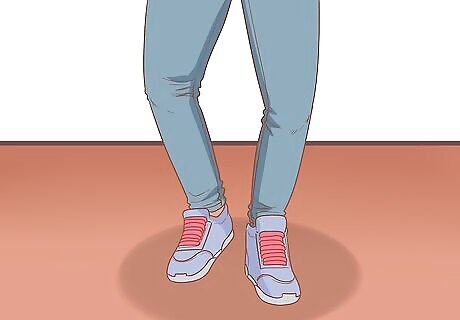
Move your feet to the beat to move and bounce your body. Use the beat and rhythm of the music as a guide to start adding some footwork into your dancing. As you’re shifting your weight back and forth, try picking up your foot and moving it from where it was before. It doesn’t have to be a large movement, but moving your feet will help you bounce and move the rest of your body along to the music. Keep your weight in the balls of your feet for stability as you move them. If you’re dancing with a partner or near other people, be mindful of your foot movement and be sure not to step on anybody’s toes.

Shift your hips around to move your whole body. While you’re moving your feet and shifting your weight, start to move your hips in the direction that you’re shifting your weight. Moving your hips will move the rest of your body and add a dynamic layer to your dancing. Twist your hips to twist and move your body even more.
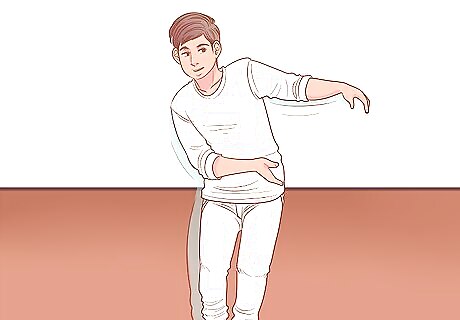
Add your arms into your movements to add another layer. If you’re nervous or uncomfortable, you may feel like keeping your arms rigid and tight to your body. Relax and incorporate your arms into your dancing with some simple moves like a fist pump by closing your fist, raising one of your arms, and pumping your hand to the beat. Try bending your arms at the elbows, hold them near your sides, and move them up and down like you’re running while you move along to the beat. Stay active and play around with arm movements that match the music. When you feel more comfortable, try more complex arm movements. For example, try an arm wave by curling at your fingers and rolling up your arm to mimic a wave travelling up your arm.Tip: Avoid repeating the same movements over and over, try mixing it up!

Change levels to make your moves more dynamic. Level refers to how you’re posturing yourself while you’re dancing. You could be standing tall, squatting at your knees, on the tips of your toes, or even on the ground if you’re breakdancing. Avoid staying at one level during your freestyle or you’ll appear rigid. Mix in different levels to make your moves more exciting. For example, you could change from standing and moving your arms at your sides to bending your knees into a squat and raising your arms above your head. It’s a small movement that makes a big change in your dancing.
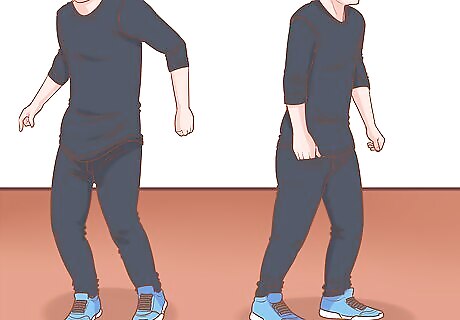
Change up the direction of your body to add originality. Direction refers to how you orient your body in your freestyle. For example, you could be facing the audience or turning your back on them while you freestyle. You can play around with the direction you’re facing to create an original combination. Try moving your upper body to the left while you’re lower body faces forward to play with separating parts of your body. Use different combinations of directions in your freestyle dance moves.
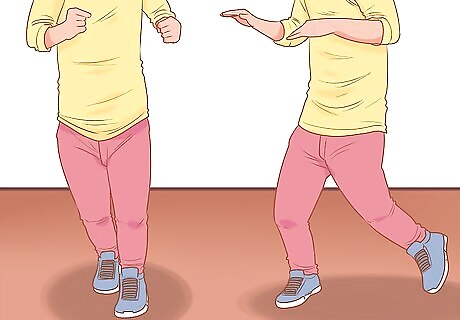
Alternate between fast and slow movement to change the energy. Your dancing energy is the way you perform your dance moves. You might be using jerky, slow and fluid, or fast tempos in your moves. You can mix up and make your moves more dynamic by playing around with the energies you use to do them. Try changing the speeds of your movements. Change your arm movement from quick and snappy to relaxed and fluid to make the same movement look and feel fresh. Add pauses and breaks into your freestyle moves to mix it up.
Using Popular Dance Moves in Your Freestyle

Put a twist on well-known moves to make your freestyle unique. If you’re feeling “choreo block” and find yourself stuck in a rut and repeating the same movements in your freestyle, you can incorporate some popular dance moves into your dancing to break the mold. Using well-known dances also allows you to use moves that you already know in your freestyle. You can also just take parts of a well-known dance move to use in your own freestyle.
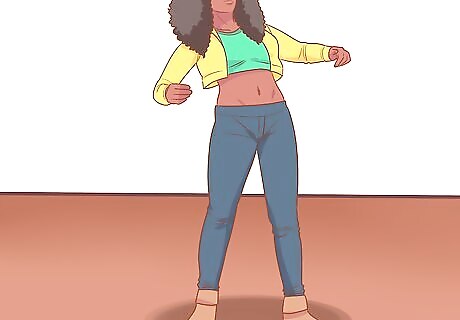
Refer to well-known moves in your freestyle. One easy way to mix a dance concept into your own freestyle is to use one that is popular or well-known and add it to your original moves and make them your own. Additionally, people watching you dance may recognize the concept you’re using and will appreciate your play on it. Example Dance Concepts The Robot: Move your arms and body in a way that imitates a robot. You can isolate a body part, like your arms or head and use robotic movements. Vogue: Use your arms and hands to frame your face in different ways. Whip : Take a squatted stance, raise either your left or right hand in front of you, and bounce your hips up and down.
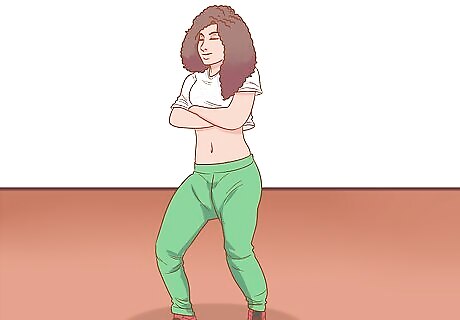
Make-up your own dance moves in the moment. Make your freestyle truly unique by using your own ideas in your dancing. You can come up with an idea while you’re dancing and create a move around it. If it works out, then great! If not, you can just come up with another idea that does work. For example, you can imagine an object, like a pepper grinder, and imagine the way you would use a pepper grinder in a dance move. Then use that concept in your freestyle!
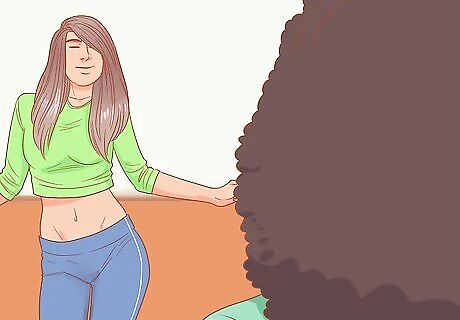
Observe the other dancers and base your dancing on their moves. If someone around you has a really great move that they’re using and other people are responding to it, join in the fun by adding it into your freestyle! Dancing is a group activity and including the moves of other people in the group is a great way to change up your freestyle moves. You may even notice other people using your concepts in their freestyle.















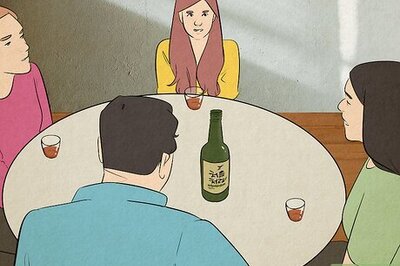

Comments
0 comment